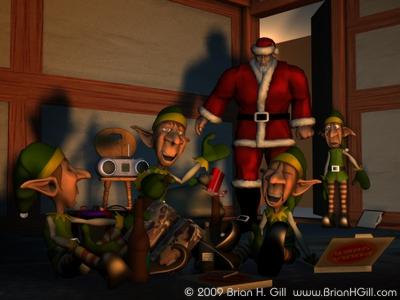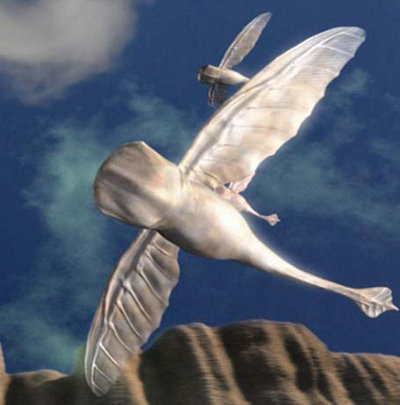Back in 1969, writing a story about how everybody would be starving in the immediate future would have been really, like, relevant.
These days, not so much: but some smart people don't seem to have gotten the memo.
I'm most of the way through a book, copyright 1990, by a fairly well-known science fiction/speculative fiction writer. It's well-written - and, just as important,
I like the author's style. I'll probably be 'studying' it, later, to see just how the author achieves the tone and mood. And then adapt techniques I've learned to my own writing.
On the other hand, this author - remember, I
like the stories - gets on my nerves now and again.
A Digression - Expectations, Assumptions, and 20-20 Hindsight
It's not the author having "the Soviets" still running Russia - and being a world power - in a fairly distant future.
20-20 hindsight is unfair. That little mix-up the Soviet Union had in Afghanistan, and a
600-kilometer-long chain of protesters demanding freedom (August 23, 1989) didn't make the headlines all that much.
The Soviet Union collapsing in 1991 or 1992 (depending on what milestones you use) probably came as a huge surprise to many people who had never lived in a world without the worker's paradise.
Like I say, 20-20 hindsight is unfair.
Speculative fiction writers don't, I think, 'predict' so much as extrapolate something they see - or think they see. For example, a timeline I'd been playing with involved the "Holy Soviet Empire" being a fairly active force a hundred years from now - I might still use that, as a sort of 'alternate history' story. But I doubt it. ("Holy Soviet"? I'd been watching the durability of the eastern Church in Russia - and what appeared to be an increasing realization that religion wasn't going to be stamped out - and came up with some hokum based vaguely on the Holy Roman Empire.)
Food, Agriculture, Technology, Malthus, and Opportunistic Omnivores
I've run into a description of homo sapiens sapiens that called us opportunistic omnivores. One phrase stuck in my mind: 'the first impulse a human has, seeing something new, is "I wonder what that tastes like?" ' I think there's something to that.
There are a few creatures on Earth that we can't eat because they're poison to us - and more that we can eat, but can't digest, like most parts of a tree. For the most part, however - although we do have dietary preferences, which vary radically from one culture to another - we can get nourishment from just about anything we can arm-wrestle down our throats.
1The rather more dignified way to put it is that, for most of the time humanity has been on Earth, we've been - ah - hunter-gatherers. There. Doesn't that make it sound better?
That was then, this is now. About 8,000 years ago some maniac had the crazy idea of taking seeds from plants he and his group liked to eat - and not eating them. Instead, he (or maybe she) planted them and took care to see that no other creature got at the plants first.
The idea caught on - and the human race was doomed.
(See "Agriculture as a Mistake," Apathetic Lemming of the North (October 29, 2007)) Right now, we're about a thousand times over the 'carrying capacity' of Earth for our species. Like I said, we're doomed.
We can get by, I'm told, for a little over a month without eating - provided we get plenty of water and oxygen - so I figure that right around November 4th or so, 999 out of every 1,000 people will die: all around the world.
I should probably write a book about it. Some dude named
Malthus wrote a book about 200 years ago, saying that irresponsible people were having babies faster than farmers could raise food - and we're all gonna die.
He took a lot longer to say that, and used bigger words - but that's the gist of it. And yes, I'm being a trifle unfair to that particular serious thinker.
The point is, this Malthus made quite a name for himself, by pointing out a terrible disaster that would doom humanity.
It hasn't happen, but his followers are still hopeful.
Wait a Minute Here! Let's Have a Reality Check
That 'thousand times over [delicate] Earth's carrying capacity' is a rough approximation - based on data which I haven't quite finished verifying. Statistically speaking, though - I'm right.
Humanity is doomed.
Civilization is going down with the scrubbin' bubbles.
And we're all gonna die.
Well, that last is almost certainly true: Given time, each human being dies. But seriously? I don't see a rapid increase in the rate, any time soon.
You see, that '999 out of a thousand will die' is based on the assumption that we all practice hunting-gathering.
Which we don't.
And haven't, most of us, for almost ten thousand years.
But if we did - and were living as opportunistic omnivores with tools that made us competitive with coyotes and wolves - Earth couldn't possibly support 6,000,000,000 of us. Each family group of us needs too much land.
So - we're doomed?
Not hardly.
News Flash! Human Beings are Clever
I think that people who are convinced that 'we're all gonna die' - from Malthus to a
butterfly expert named Paul, to today's crop of doom-criers, have all missed a subtle, but important, point.
Human beings didn't stop being clever in the upper paleolithic.
We've got a long history (and a longer pre-history) of changing the rules.
Like, 'it's dark and cold at night.'
We don't like being in the dark and cold.
We figured out how to make fire.
Sometime after that, we figured out how to put out fires.
I'm not saying it's all beer and skittles - for example, not too long ago we found out why it's not a good idea to turn off the pumps in a nuclear reactor. Remember Chernobyl? Some of the 'fires' we're learning to put out these days are pretty serous.
But I don't think that people are any stupider now, than they were when someone invented string, or Archimedes got credit for inventing a helical water pump.
You Mean, Farmers Don't Look Like That? Well, Sha-Zam!
Reading that (very entertaining) book, I get the feeling that the author has something in common with quite a few of America's self-described best and brightest.
They haven't a clue what a farmer looks like.
I often get the impression that members of congress, and the 'experts' they listen to, have a mental image of what a farmer looks like that - how to I put this - is alternatively accurate.
He's got a slight posture problem: stands and walks with a slouch. Nothing serious, but noticeable. He wears dirty denim bib overalls, sometimes with a frayed straw hat, occasionally wears shoes - and sometimes has a shirt on. A flannel shirt.
He talks funny, and his intelligence is somewhere between that of an average reality-show contestant and a rutabaga.
If you asked America's serious thinkers to describe a 21st-century America farmer - jump-starting their frontal cortex in the process - America's best would probably realize that Joe Farmer doesn't pull the plow himself, or use a horse - and knows how to read and write.
Actually, the hayseed stereotype isn't all that far from the way (some) farmers dressed - in the warmer parts of America - maybe a century ago. And still do, when weather and work demand it. They do, however, wear boots. Farmers work around and in some very big, very powerful, machinery: and they need to keep their feet more than most office workers.
I think one of the problems that 'intelligent, sophisticated' people have is that, like just about everybody else in America these days - they're city folk.
I don't have anything against people who live in a city, or in the residential areas huddled around cities. For economic reasons, most people need to live close to - or in - cities. That's the way it is right now.
It does seem, though, that city folks - even if they've flown between cities - really aren't all that knowledgeable about what it's like outside the metropolitan areas.
(See "The Effect of Information Technology and Media Preoocupation with Urban Events on the Relative Sophistication of Urban and Rural Populations ," Another War-on-Terror Blog (April 13, 2008)) The point I'm making is that, despite commonly-held (and, I trust, unconsidered) beliefs in America and quite a number of other places in the world, people
don't have to practice agriculture the way we did a thousand years ago.One of the big, recent, changes was the "green revolution" in the 20th century. If you're not directly or indirectly involved with agribusiness, you probably haven't heard of it. It doesn't fit the 'and we're all gonna die' model - and good news like that hasn't been relevant since sometime in the sixties.
Based on the fossil record and a few thousand years of recorded history, I doubt the "green revolution" is the last gasp of human ingenuity. These days, we may be more likely to build
cute dancing robots, than something of more drearily serious merit: but I don't think we're all that much less bright than the people who figured out how to make tools out of flint.
And no: I don't think that 99.9% of humanity will be dead by mid-November.
1 A vignette.
A diplomat, getting briefed on what to expect from the Terran ambassador, is told: "Whatever you do,
don't let the human get hungry!"



